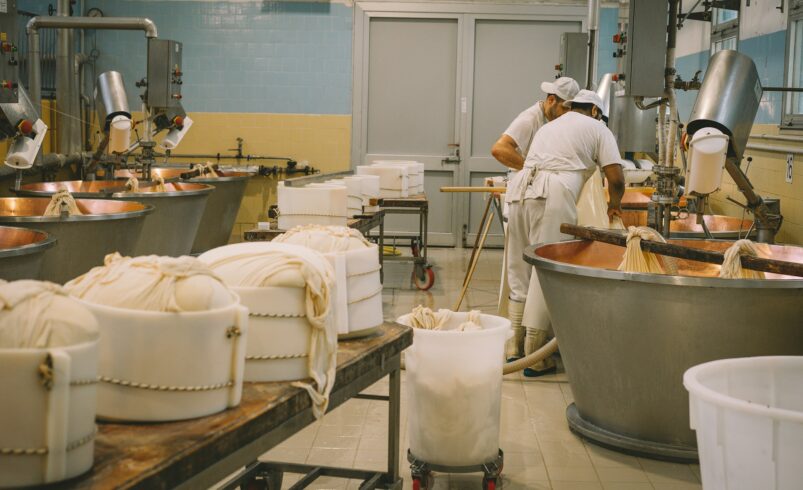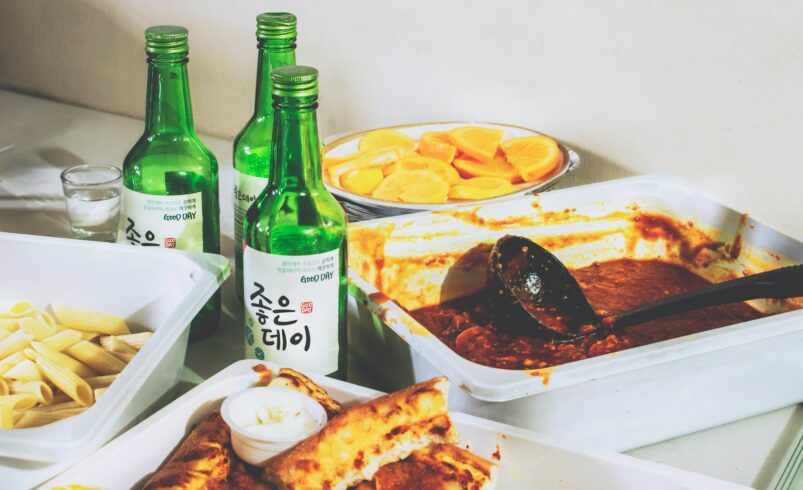Food safety is the backbone of food manufacturing. Every product that leaves a facility directly impacts the health and trust of the consumer. This blog will explore the most pressing food safety risks in manufacturing and practical ways to prevent them. You’ll find essential advice on contamination prevention, HACCP compliance, and how a good manufacturing practices audit can keep safety standards high.
Whether you oversee a small production line or manage a large facility, understanding these risks is crucial to ensuring high-quality, safe food products reach every table.
Understanding Contamination in Food Manufacturing
The Three Main Types of Contamination
Food manufacturing safety starts with addressing contamination. The primary risks fall into three categories:
- Biological contamination involves bacteria, viruses, and fungi that can thrive in food and cause illnesses.
- Chemical contamination comes from cleaning agents, pesticides, or additives improperly used or stored.
- Physical contamination includes foreign objects like metal fragments, glass, or plastic pieces entering food during processing.
Each type presents significant risks to safety, so identifying potential sources early is a critical step in any good manufacturing practices audit.
How to Tackle Contamination Risks
- Regularly review ingredient sourcing and supply chains.
- Set up multiple checkpoints during production to identify hazards.
- Train staff continuously on hygiene and safe handling.
- Routinely inspect machinery for wear and accidental debris.
Establishing robust processes and keeping detailed records promote food manufacturing safety while building consumer trust.
Poor Personal Hygiene and Its Impact
Where Hygiene Gaps Create Risk
The people working in food manufacturing are the first line of defense against contamination. Gaps in personal hygiene can introduce bacteria or allergens directly into the product stream.
- Employees not washing their hands properly or frequently enough.
- Wearing contaminated clothing or not adhering to dress codes.
- Handling raw and cooked items without proper precautions.
Best Practices for Hygiene
- Implement strict hand-washing protocols with visible compliance tracking.
- Require uniforms or protective gear that is cleaned regularly.
- Provide training sessions focused on everyday hygiene essentials.
Maintaining spotless hygiene protocols is a key focus of any good manufacturing practices audit and can greatly reduce preventable incidents.
Equipment Sanitation and Maintenance
Dirty or Malfunctioning Equipment
Equipment that isn’t cleaned or maintained can harbor bacteria, allergens, or even hazardous debris, creating invisible threats to food safety.
- Build-up of residues in pipes, mixers, or conveyors.
- Worn or damaged equipment parts that introduce metal shavings or plastics.
Preventive Measures for Equipment
- Schedule regular sanitation with logged records.
- Inspect for wear and tear during daily checks.
- Use only approved cleaning agents and ensure proper chemical handling.
Following these steps supports both HACCP compliance and overall contamination prevention.
Allergen Management
Hidden and Unexpected Allergen Risks
Cross-contact between allergens and non-allergen foods is a top reason for recalls and severe health reactions. Undeclared allergens arising from shared equipment or poor labeling can have severe consequences.
Proven Allergen Control Strategies
- Segregate processing and storage areas for allergen vs. non-allergen products.
- Clean and sanitize shared equipment thoroughly between runs.
- Audit labels and suppliers regularly to ensure accurate ingredient information.
Proactive allergen management is central to meeting food manufacturing safety standards and building consumer confidence.
HACCP Compliance and Documentation
Gaps in Critical Control Points
Hazard Analysis and Critical Control Points (HACCP) is a globally recognized system to identify and control food safety risks. Lack of compliance in establishing or maintaining these checkpoints can undermine the entire process.
Strong Documentation and Compliance Routines
- Document each critical control point and set clear limits.
- Monitor and record temperatures, cook times, and storage conditions.
- Schedule internal audits to review ongoing HACCP compliance.
Effective documentation also simplifies regulatory inspections and supports any external good manufacturing practices audit.
Environmental Monitoring and Pest Control
The Unseen Threats Around Production
Environmental factors such as pest activity, standing water, or uncontrolled temperatures can introduce pathogens at any stage of production.
Building a Strong Monitoring Program
- Set up regular environmental testing, including air and surface swabs.
- Enforce strict barriers to prevent pest entry and monitor vulnerable areas.
- Maintain climate control systems and fix leaks or water build-up promptly.
Robust pest control and monitoring keep contamination threats at bay, supporting safer facilities.
Fostering a Culture of Food Manufacturing Safety
Building and maintaining food manufacturing safety requires commitment from every level of the organization.
- Lead with regular training and clear accountability.
- Encourage transparent reporting of incidents and near misses.
- Incorporate continuous improvement into standard operating procedures.
By emphasizing safety as a core value, companies can decrease risks, comply with regulations, and produce consumer-trusted products.
Raising the Standards for Safer Food Manufacturing
Food safety isn’t a one-time checklist; it’s an ongoing commitment. Manufacturers that actively address the risks—from allergen management to HACCP compliance and contamination prevention—build more resilient operations and safer products. Make robust food manufacturing safety processes part of your everyday workflow and rely on regular good manufacturing practices audits to catch any gaps before they become hazards.
Take these steps to cultivate a safe, trusted environment that stands up to both regulatory scrutiny and consumer expectations. For further resources on building out your facility’s food safety protocols or preparing for audits, review recent industry guidelines and schedule recurring team training.










